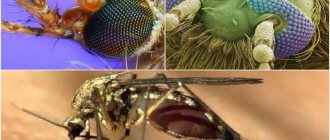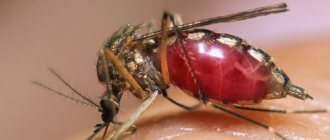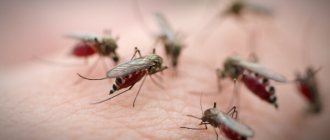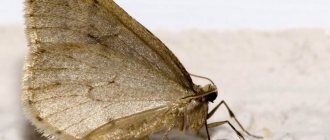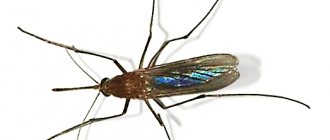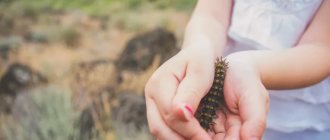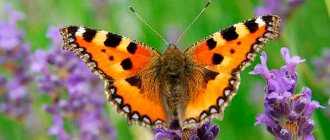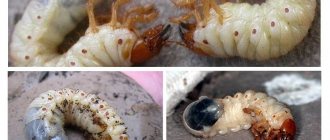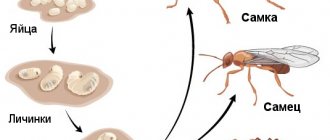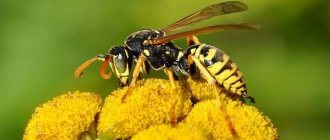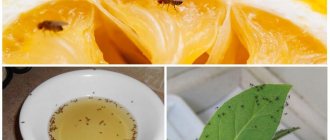Why do butterflies need legs?
Butterfly legs are designed to stay in one place for a while. Each foot has a set of devices for fixing on various surfaces. The ability to move plays a secondary role. Butterfly legs consist of several parts:
- coxa;
- trochanters;
- hips;
- shins;
- paws.
They have spurs, spines and brushes. How many pairs of legs do butterflies have? If the body consists of three thoracic segments, then there are also three pairs of legs. And they are all designed so that the butterfly can move freely in any direction.
Many lepidopterans have taste receptors on their legs: as soon as the butterfly touches the sweet nectar with its paw, the proboscis will immediately unfold and it will be possible to start eating.
There is one more difference from each other among individuals of the same species: in some lepidopterans, the front legs are hidden under the fleecy cover of the body. They use them to clean antennae, spiracles and other parts of the body. And they use only four legs to move.
How many legs does the butterfly have in the photo? Many will confidently say that it is four. But in fact there are six of them, just two of them are “hidden”.
Acraga koa, or "gummy" caterpillar
The amazing caterpillars of this species look like something extraterrestrial. Their transparent silver body appears to be made of jelly. Due to this they are called “marmalade” or “crystal”. Their body is covered with cone-shaped processes, at the tips of which there are orange dots. The caterpillars reach only three centimeters in length. They are sticky to the touch, and the substances that their glands secrete are saturated with poison.
The insect lives in the Neotropics, a region covering South and part of Central America. You can meet it in Mexico, Panama, Costa Rica, etc. The caterpillar feeds on the leaves of mango trees, coffee and other plants.
How many legs does a butterfly caterpillar have?
The body of caterpillars consists of a head, three thoracic and ten abdominal segments. They have three pairs of legs in the thoracic region. Which corresponds to the number of legs in an adult and at the same time this is the only similar feature. In addition to them, there are several more pairs of pseudopods on the caterpillar’s body: from two to five. They are designed to make it more convenient for the larva to move and stay on the leaves and stems of plants.
The caterpillar grows quickly because it eats more than its own weight. The size of the body increases, and they need to get rid of tight coverings. Therefore, she needs to shed periodically.
Popular types of caterpillars
Admiral
- Daytime appearance, having the following color composition: white and black; bright orange; red.
- They can be seen in Guatemala, Haiti, New Zealand, North America and North Africa. Sometimes appear in England and Scandinavia.
- The caterpillars feed on hops, thistles and nettles.
- They inhabit meadows and fields, roadsides, river banks, and other bodies of water.
- Sometimes it can be found in the mountains at an altitude of up to 3000 meters.
- The admiral is listed in the Red Book in the Smolensk region.
Cabbage butterfly
- It is also known as cabbage white because of its color, which has white, gray and golden shades.
- The butterfly is bright, standing out against the background of bushes and flowers.
- Leads a diurnal lifestyle, length up to 60 millimeters.
- They grow from caterpillars in Japan, Asia, Chile, Panama, and northern Africa.
- They live on forest edges, meadows and clearings, gardens and parks.
- The caterpillar's diet includes alfalfa and dandelion.
- Reaches up to 3.5 centimeters and molts up to 4 times.
- It is considered a pest of vegetable crops, especially cabbage.
Redtail
- This species from the family of moths is nocturnal, and its color is in no way related to the name of the insect.
- The predominant colors in color are: yellowish; white; brown and golden.
- Habitat: Japan; Russia; Caucasus; Crimea.
- Wing length up to 67 millimeters. The total body length reaches 50 millimeters.
- Females are very fertile and can lay up to 1000 eggs.
- The following are considered edible for them: oak; willow; birch; bird cherry; hawthorn and apple tree; beech; hops and poplar.
Swallowtail
- The swallowtail was bred in Sweden by a famous naturalist.
- It is diurnal, its wingspan can reach 81 millimeters, and it has about 37 subspecies.
- Habitat: Japan; Caucasus; south of Siberia; Iran and Syria; England; Ireland.
- The diet consists of: hogweed; carrot; caraway; fennel; dill and parsley; Japanese alder.
- Listed in the Red Book in Russia and Ukraine.
Peacock eye
- A very beautiful daytime butterfly with patterns on its wings in the form of an eye.
- The habitat is Japan and Eurasia: fields; meadows; bodies of water; clearings and forest edges.
- It can climb mountains to a height of up to 2000 meters.
- Reproduction begins from June to mid-July.
- Predominant colors: black; yellow; orange; grey; white.
- The wingspan measures 15 centimeters.
Clothes moth
- It is also called ordinary, indoor.
- Among people, the insect has earned a negative attitude due to eating fabric, natural fur, and furniture coverings.
- It is the caterpillars that have gnawing mouthparts that cause the damage.
- The diet of moth caterpillars consists of: oats; corn; barley; wheat; flour.
- The species is distributed in: New Zealand; USA; Egypt; Australia and Canada.
- The transformation from pupa to adult lasts 8 days.
Moth
- They are called land surveyors. This is a huge family of butterflies with around 23,000 species.
- Each species is a pest of forests, gardens and foliage.
- Habitats in the territories of Russia and Europe.
- Colors with a predominance of gray, black, flesh and beige. There are also colorful ones: blue; multi-colored; pink and silver.
- Both males and females do not have ocelli.
- The wingspan reaches 51 millimeters.
Blind Hawkmoth
- A common species of butterflies from the hawk moth family in central Russia.
- The sizes of males and females differ: females - from 55 millimeters to 70; males - from 50 millimeters to 60.
- They have mustaches and large dark spots on the wings.
- The species is listed in the Red Book on the territory of Bashkortostan.
- Habitat: Mongolia; China; Japan; Sakhalin.
Between caterpillar and butterfly: pupa
After 4-5 molts, the caterpillar turns into a motionless pupa covered with chitin. Some pupae look like a butterfly mummy - folded legs, antennae pressed to the body. There are also those that do not resemble either a caterpillar or a butterfly: the body is covered with spines and outgrowths.
After the onset of the pupal stage, the insect undergoes continuous metamorphosis. During this time they do not move or eat. Ultimately, the chitinous cover of the pupa bursts and a butterfly emerges from it.
The pupa is the defenseless life period of an insect. If danger arises, she will not be able to hide. Therefore, before pupating, it is important for the caterpillars to take care of a safe place for transformation, and their legs help them a lot in this.
Features of individual types
Some caterpillars have special respiratory structures that allow them to survive in aquatic habitats. For example, the larvae of some pyramidal clams (family Pyralidae) are aquatic, and several members of the genus Hyposmocoma (family Cosmopterigidae) have an amphibious caterpillar stage. Some caterpillars spin silken sheaths that provide protective coverings. They often have leaves, pebbles and more woven into them, making them look like part of their natural surroundings.
Control of caterpillar pests
There are three groups of ways to combat caterpillars devouring crops of vegetables, fruits and vegetables.
Mechanical method - when caterpillars are collected manually, their overwintering clutches are cut off.
The biological method is when birds are attracted to agricultural fields and orchards and eat caterpillars, arranging feeders and birdhouses for the birds.
Caterpillar snake
The chemical method is the most effective, but after some time the caterpillars get used to the composition of the drugs and stop dying, so the chemical method is alternated with the biological one.
In dacha conditions, to combat the invasion of caterpillars, infusions of herbs are used - black henbane (it works well against the caterpillars of the ubiquitous cabbage butterfly), hemlock (it is effective against caterpillars attacking fruit trees), peppermint, and elderberry.
What do caterpillars eat?
Eating caterpillars
An insect that has just been born eats the top layer of the egg in which it grew. After this, the “worm” proceeds to its main meal. Each type of larvae has its own diet. Most caterpillars eat vegetation: fruits and various green masses. Larvae can be divided into 4 categories depending on their food supply:
- Polyphages - consume all plants without exception. This species includes, for example, the caterpillars of moths.
- Oligophages - prefer to consume specific plants. For example, umbrella bushes.
- Monophagous - they eat only one type of plant. For example, silkworm larvae consume only mulberry leaves.
- Xylophages - the food base of this species is wood.
We invite you to familiarize yourself with: Differences between the larvae of the May beetle (Khrushchev) and the mole cricket, photo
Caterpillar food
It is worth noting certain types of caterpillars, which cannot be combined into any category, since there are few of them, but they exist:
- Caterpillars of gray or black granary moths eat only fungi of the tinder type or lichens. Poisonous spores are the main type of food for such larvae.
- There are representatives of larvae in the world that eat the outer covering of animals: particles of horns, wool, skin, hair.
- Some types of caterpillars consume wax and even honey.
- Predatory insects - there are few representatives of this species. Cases of predation occur if the population increases greatly and there is a shortage of regular food. For example, bollworm larvae attack caterpillars of their own species that are weakened or sick. Some species eat aphids, small insects and scale insects. To do this, they have special hunting devices in the form of a large mouth, sticky legs, and so on.
- Parasitic larvae settle on representatives of specific insects. Some types of larvae settle on the hairs of caterpillars. Because of this, the host insect dies.
- Certain species of caterpillars live in ant heaps. In this case, their main food is small insects. Attracting the victim occurs with the help of special sounds that the larva makes or a special sweet liquid that is secreted by its secretory functions.
Each type of caterpillar has its own diet, and it depends on the category of these larvae, their mode of existence and habitat.
Where do caterpillars live?
Most caterpillars live on land, although some species develop underwater (broad-winged moths). And Hawaiian moth caterpillars live both on land and in water, being adapted to exist in any environment.
In accordance with their living conditions, caterpillars are divided into 2 categories: secretive and leading a free lifestyle.
Secretive caterpillars include the following varieties:
- leafworms - develop in curled leaves of trees;
- frugivores (carpophagous) - live in fruits;
- drillers (xylophagous) - live inside the trunks, shoots and roots of trees;
- miners - make passages and inhabit the structure of leaves, petioles, buds and peel of fruits;
- gall formers - provoke pathological growth of plant parts damaged by them;
- underground caterpillars - live in the ground;
- aquatic caterpillars - live in water.
The second type of caterpillars, which live freely on the plants they eat, make up the majority of caterpillars of large species of butterflies.
Below are some interesting facts about caterpillars;
The main role of the caterpillar is feeding
Caterpillars eat so much food
that they are thought to consume 27,000 times their body weight. As a result, caterpillars can be up to 100 times their size when they hatch.
When a caterpillar hatches from its egg, its first meal is the egg shell, which is rich in protein. Food is important at this stage as it helps in the process of metamorphosis and maturation.
Caterpillars that are poorly fed cannot reproduce when they become butterflies or moths.
2. Like adult moths and butterflies, caterpillars have six true legs;
The caterpillar has only six true legs. The other legs are false, they help the caterpillar to rise and move along the surface of the plant. There can be as many as 10 pseudopods, and they are usually located on the caterpillar's abdomen.
A unique feature of these legs is that they have tiny hooks that allow them to grip surfaces and avoid slipping and falling.
Caterpillars are known for producing silk
Caterpillars produce silk through an opening on the lip called a spinneret, which releases liquid silk. Once liquid silk comes into contact with air, it hardens into natural silk.
Caterpillars have 4,000 muscles, which is almost six times the number of muscles in humans
Unlike humans, who only have 629 muscles, caterpillars have 4,000 muscles. Each muscle has one or two neurons attached. Many muscles are unique to caterpillars, as insects such as grasshoppers have only 900 muscles.
Caterpillars have 12 eyes arranged in a semicircle
Caterpillars have 12 tiny eyes known as stem eyes. These eyes are located in a semicircle from one side of the head to the other. They help the caterpillars recognize light and dark, but do not provide excellent vision, so the caterpillar cannot see images or visualize colors. Thus, the caterpillars move “blindly” from one place to another.
6. The Assassin Caterpillar Can Kill People
The assassin caterpillar has caused many deaths in South Africa (especially Brazil). Its poison is under scientific research. Contact with the killer caterpillar causes a person to bleed. The scientific name of the caterpillar is Lonomia obliqua.
7. Caterpillars are able to imitate a snake to protect themselves from predators.
They are arranged in a row of about 300 caterpillars, so that they resemble a snake. Consequently, the predator will avoid them for fear of the snake's venom.
Caterpillars lack lungs, which are the main respiratory organ in most animals.
Instead of lungs, caterpillars have spiracles, which are located on each side of their body. These spiracles are connected to the trachea. Inhalation and exhalation of oxygen and carbon dioxide respectively occurs during the movement of the caterpillar.
The type of movement exhibited by caterpillars is not found in any other animal on earth.
The tracks move in a wave-like pattern from the back to the front. Because they have no bones, caterpillars move by contracting their muscles in a wave-like motion. No other animal moves like a caterpillar.
Poisonous caterpillars: name, characteristics, what it looks like, what kind of butterfly it turns out, description, photo
Poisonous caterpillars
Flannel Moth - This poisonous caterpillar looks like a small hamster. Her butterfly is no less beautiful. But it is strictly forbidden to touch it with your hands, as it causes an allergic reaction and even a feeling of suffocation.
Caterpillar "lazy clown"
Caterpillar "lazy clown" (lat. Lonomia obliqua) - lives in Uruguay. A highly poisonous insect that secretes a special natural toxin. The venom of this caterpillar causes skin burns. In addition, the toxin can penetrate through the skin to internal organs and cause hemorrhage, for example, in the gastrointestinal tract, kidneys, and also causes pulmonary edema and disruption of the central nervous system.
Saturnia Mayan caterpillar
Saturnia Maya caterpillar (Hemileuca maia) is covered with hollow spines, upon contact with which, a burning sensation on the skin, rash and nausea appears. The appearance of this caterpillar should be frightening, because a crawling, hairy insect with black spines will disgust any person. This caterpillar lives in our latitudes on oaks and willows. The butterfly from this caterpillar is also black in color with a hairy body, but it is not poisonous.
Volyanka caterpillar
Volyanka caterpillar (Orgyia leucostigma) - you won’t be able to pass by this caterpillar, as it is noticeable thanks to its red head and white body. Eats everything green and woody in its path. If you touch the hairs of this insect, burns and irritation immediately occur. The rash may not go away for several weeks.
White cedar moth caterpillar
The white cedar moth caterpillar (leptocneria reducta) lives on a cedar tree in several groups at the same time, eating every single leaf. Contact with the hairs of this caterpillar causes irritation, but not for all people. If a person has sensitive skin, they will most likely feel a burn and develop a rash.
Coloring allows you to distinguish a poisonous caterpillar from a “peaceful” one. The brighter the color. It is all the more likely that the caterpillar is poisonous.
Contact with it for a person can cause teething, redness of the skin, shortness of breath, various pains and develop diseases.
- Coquette caterpillar. Lives in Mexico. Very similar to a hamster. Fluffy brown beauty 2-3cm long. on contact may cause chest pain and shortness of breath.
- Saddle caterpillar. It has a bright color: the back is poisonous green and has a large brown spot in the middle. The head and end of the abdomen are brown with thick horns. There are coarse hairs on the body. There is strong poison at the ends of these hairs.
- Lazy cleaver. Lives in Uruguay and Mozambique. The caterpillar is small in length, 3-4 cm. It is black and white in color with green tufts of stiff, milky-green hairs. Its poison can disrupt the nervous system and cause bleeding of internal organs.
- Burning rose. The main color is yellow, with red and blue stripes. Thick horns have spikes with poison. Upon contact, the spines break off and a rash appears on the skin.
